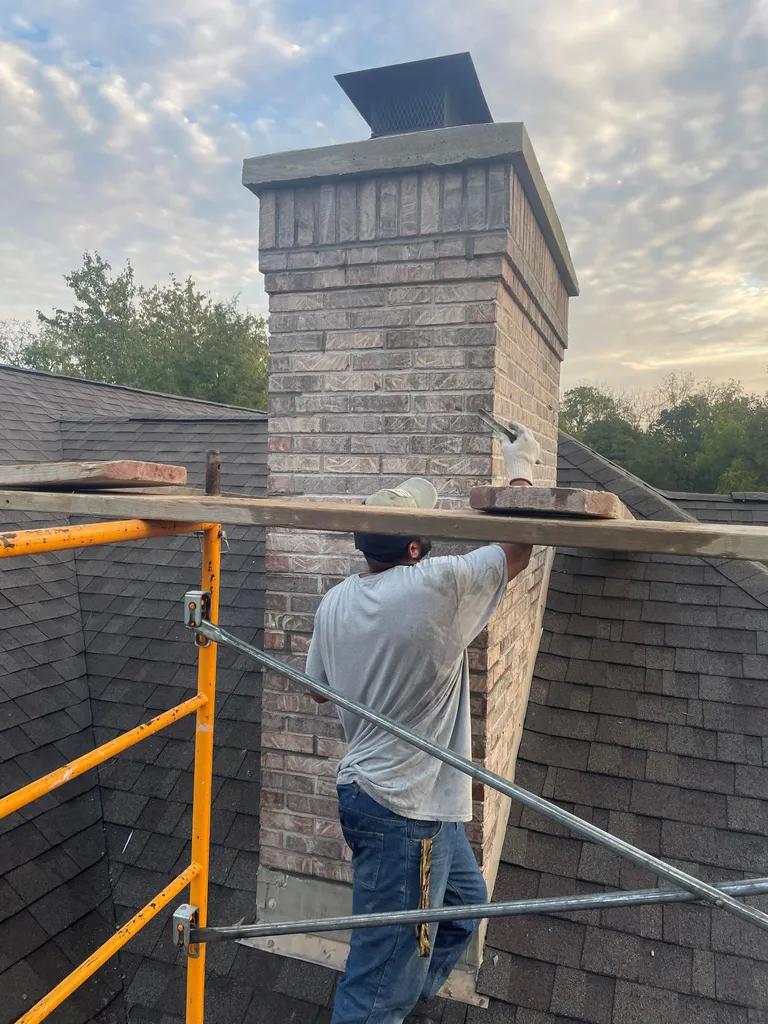Chimneys are an essential component of any household, providing ventilation for fireplaces and stoves. However, when a chimney stack starts leaking, it can lead to costly damages and pose a serious safety hazard. In this article, we will discuss common causes of chimney leaks and provide practical solutions for troubleshooting and repairing a leaking chimney stack. Understanding the signs and symptoms of chimney leaks is crucial in maintaining the integrity of your home’s structure and ensuring the safety of your loved ones.
Table of Contents
- Common Causes of Chimney Stack Leaks
- Inspection and Assessment Techniques for Identifying Leak Sources
- Effective Repair Strategies for Resolving Chimney Stack Leaks
- Preventative Maintenance Practices to Avoid Future Leaking Issues
- Q&A
- In Retrospect

Common Causes of Chimney Stack Leaks
One common cause of chimney stack leaks is damaged flashing. Flashing is the metal or other material that seals the joint between the chimney and the roof, preventing water from seeping in. Over time, flashing can become corroded or damaged, leading to leaks. It’s important to regularly inspect and maintain the flashing to prevent water damage to your chimney and home.
Another common cause of chimney stack leaks is cracked or deteriorating mortar. If the mortar between the bricks of the chimney stack begins to crack or wear away, water can seep into the chimney and cause leaks. It’s important to repair any mortar damage promptly to prevent further water damage and structural issues. Additionally, make sure to inspect the chimney cap for cracks or missing pieces, as this can also contribute to leaks. Regular maintenance and inspections can help identify and address these issues before they become costly problems.
Inspection and Assessment Techniques for Identifying Leak Sources
When troubleshooting a leaking chimney stack, it is crucial to utilize proper inspection and assessment techniques to identify the source of the leak. One effective method is to visually inspect the exterior of the chimney for any visible cracks or gaps where water could penetrate. Pay close attention to the mortar joints, as they are common areas for water intrusion. Additionally, inspect the chimney cap for any signs of damage or deterioration that could be allowing water to enter.
Another technique for identifying leak sources is to conduct a smoke test. This involves releasing smoke into the chimney to see if any leaks are present that could be allowing water to enter. It is important to seal off the fireplace opening and any other openings before conducting the test to ensure accurate results. By using a combination of visual inspections and smoke tests, you can effectively pinpoint the source of the leak and take the necessary steps to repair it.

Effective Repair Strategies for Resolving Chimney Stack Leaks
In order to effectively resolve chimney stack leaks, it is important to first identify the source of the issue. One common cause of leaks is damaged flashing around the base of the chimney. To repair this, you can remove the old flashing and replace it with new metal flashing that is properly sealed to prevent water from seeping in. Additionally, checking the condition of the chimney cap and crown can help prevent leaks. If these areas are damaged or deteriorating, they should be repaired or replaced to ensure proper water drainage.
Another strategy for resolving chimney stack leaks is to inspect the mortar joints between the bricks or stones of the chimney. Over time, these joints can deteriorate and allow water to enter the chimney. Repairing these joints by re-pointing them with fresh mortar can help prevent leaks. It is also important to check for any cracks or holes in the chimney structure itself, as these can also be entry points for water. Sealing these areas with a waterproof sealant can help prevent further leaks and protect the chimney from water damage.

Preventative Maintenance Practices to Avoid Future Leaking Issues
One common issue that homeowners may face is a leaking chimney stack. It is essential to address this problem promptly to prevent further damage to your home. By implementing preventative maintenance practices, you can avoid future leaking issues and ensure the longevity of your chimney.
Here are some troubleshooting tips to help you identify and address a leaking chimney stack:
- Inspect the flashing: Check the flashing around the chimney for any signs of damage or deterioration. Replace any damaged flashing to prevent water from seeping in.
- Clear the gutters: Clogged gutters can cause water to overflow and seep into the chimney stack. Make sure to regularly clean out your gutters to prevent water damage.
- Check the masonry: Inspect the masonry of the chimney for cracks or gaps. These openings can allow water to penetrate the chimney and cause leaks. Seal any cracks or gaps to prevent water intrusion.
Q&A
Q: What are some common causes of a leaking chimney stack?
A: Common causes of a leaking chimney stack include cracks in the chimney crown, deteriorated mortar joints, damaged flashing, and improper chimney cap installation.
Q: How can I determine if my chimney stack is leaking?
A: Signs of a leaking chimney stack include water stains on the ceiling or walls near the chimney, musty odors, and visible moisture or water in the fireplace or chimney.
Q: How can I prevent my chimney stack from leaking?
A: Regular maintenance and inspections, along with proper installation of a chimney cap and flashing, can help prevent chimney stack leaks.
Q: What should I do if my chimney is leaking?
A: If you notice a leak in your chimney stack, it is important to address it promptly to prevent further damage. Contact a professional chimney inspector to identify the source of the leak and recommend necessary repairs.
Q: Are there any DIY solutions for fixing a leaking chimney stack?
A: While some minor repairs, such as sealing cracks in the chimney crown, can be done as DIY projects, it is recommended to consult a professional for more extensive chimney repairs to ensure proper and safe repairs.
In Retrospect
In conclusion, addressing a leaking chimney stack is essential to maintain the integrity and safety of your home. By following the steps outlined in this article, you can effectively troubleshoot and solve any issues with your chimney stack. Remember to always prioritize safety and consult with a professional if needed. Stay proactive in maintaining your chimney to prevent any further leaks and ensure the longevity of your chimney system. Thank you for reading and good luck with your chimney troubleshooting efforts.


